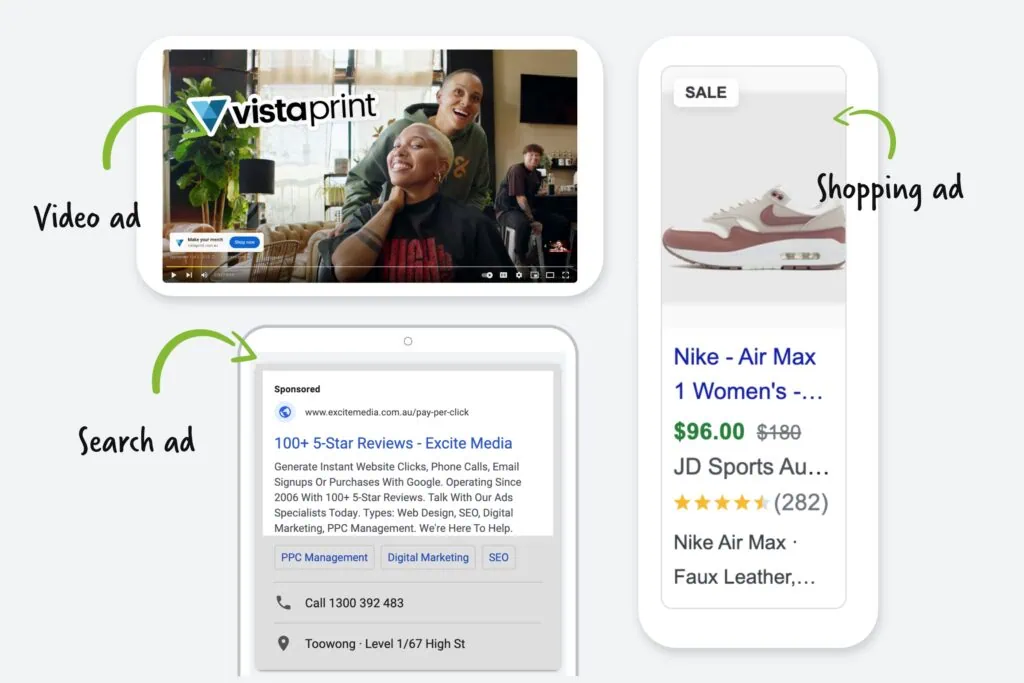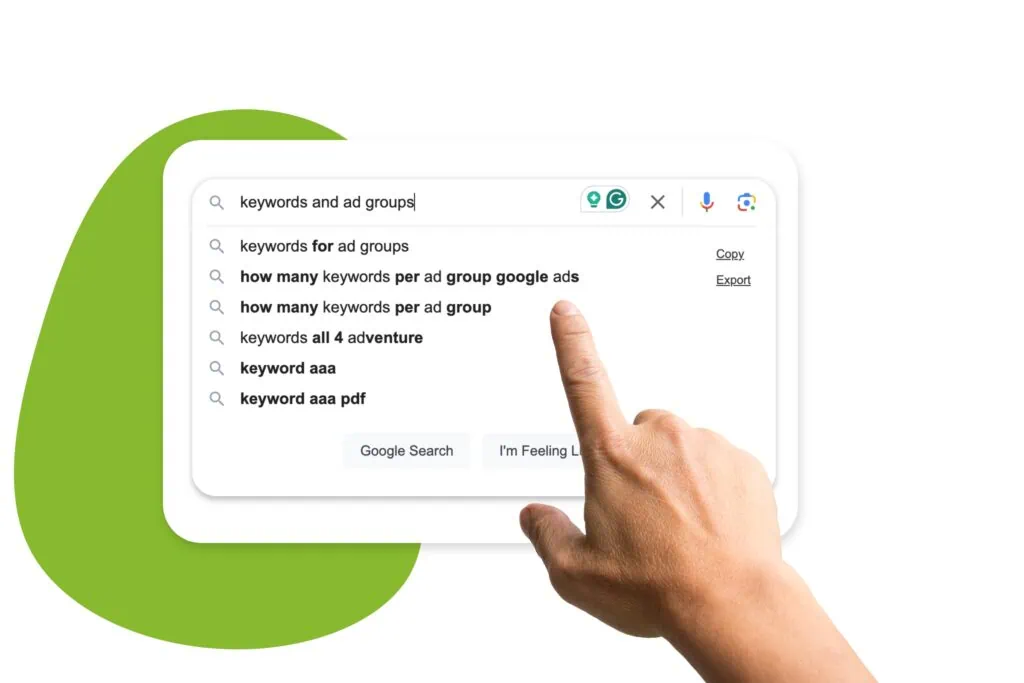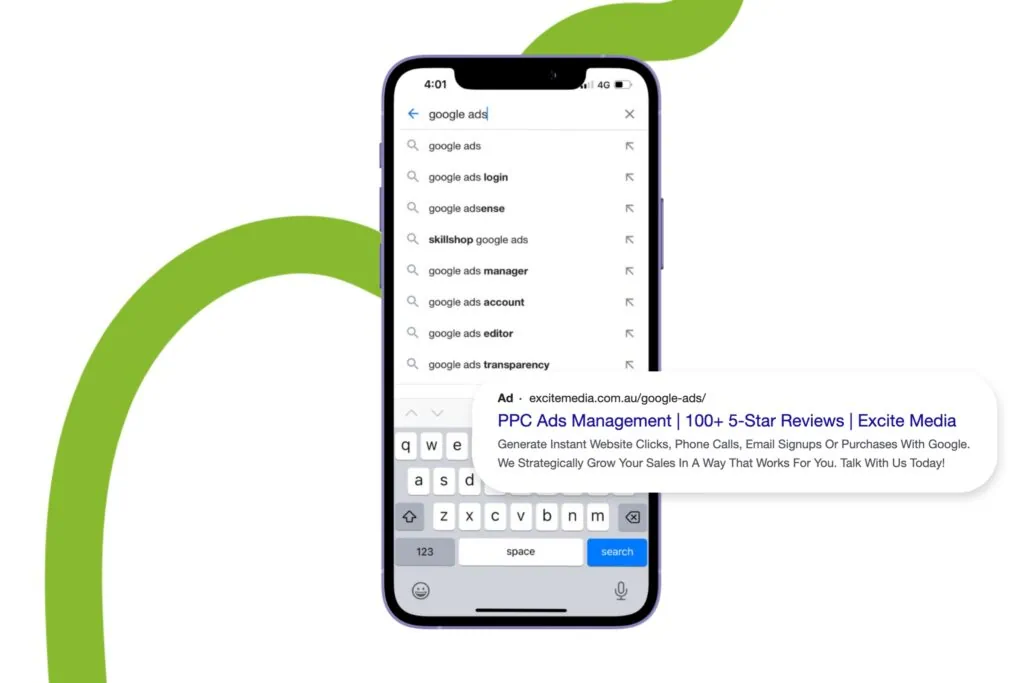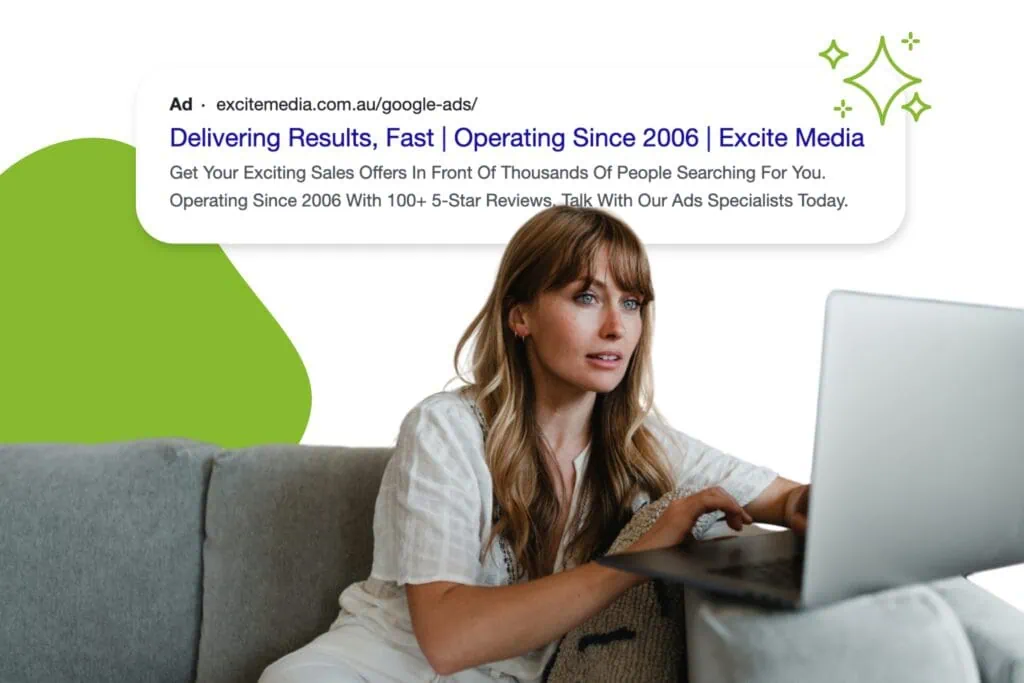Google Ads are a reliable staple for any digital marketing campaign. It’s a channel many businesses rely on for quick wins.
But it’s not as easy as just setting up a Google Ads campaign and watching the wins roll in.
A good, sturdy Google Ads campaign calls for the right keywords, the right targeting, a clever bidding strategy, smart ad groups, effective copy — the list goes on.
The good news for you (and your Google Ads campaign) is that we’re breaking it all down in this article 👇
Table of Contents
ToggleThe TL;DR (too long, didn't read) 👇
- Preparation is key. Put in the research early on to lay the right foundations for your campaign.
- Research the right keywords and group them logically to find the right audiences and show up in the right places.
- Ad copy matters. Put in the time to right engaging and enticing ad copy that encourages people to click your ad.
- Google Ads isn't set and forget. Keep monitoring and optimising your campaign to get the most out of it.
- Consider getting an agency to help you with your ads. (Hi 👋)

Preparing for your Google Ads campaign📚
What are your goals? ⚽️
Who's your audience? 👯♀️
The more specific you can get here, the better.
Ads thrive on insightful data. So, demographics around age, gender, and location are great, but even your audience’s interests can play a huge part here.
Think about your ideal customer, what do you know about them? You can determine this by looking at your past sales, the profiles of your existing or previous customers, and even utilising data from platforms like Google Ads.
What's your budget? 💰
Working out an appropriate budget for your Google Ads campaign is important to make sure you can sustain your advertising efforts without overspending.
Start by working out what you can afford to spend daily or monthly on your ads.
Consider the average cost-per-click (CPC) in your industry — you can find this using tools like Google Keyword Planner. This will give you an idea of how much you might pay for each visitor to your site.
Remember, with Cost-Per-Click, it’s good to consider what a conversion is worth to you. Consider the average Lifetime Value of your customers. If you do one-off projects, but they’re valued at $20,000, then a Cost-Per-Click of $200 is a pretty good investment.
If you sell products valued at an average of $50 and only 50% of your customers repeat purchases, then you’ll be looking for a much, much lower Cost-Per-Click.
Then, think about your overall marketing budget and what portion you want to allocate to Google Ads.
It’s important to remember that Google Ads operates on a pay-per-click (PPC) model, so you only pay when someone clicks on your ad. Set a daily budget that reflects the maximum amount you’re willing to spend per day. Google will use this to estimate your monthly spending.
Do you know about bidding strategies?
In Google Ads, you can choose between manual bidding and automated bidding.
Each of these options offers distinct advantages and challenges, depending on your campaign goals and your level of expertise.
Manual bidding gives you complete control over your bid amounts for ad placements. This approach is beneficial if you have the time and knowledge required to analyse data and adjust bids based on performance. The major advantage is its level of control — this can allow you to really optimise your spending and targeting. It does, however, require continuous monitoring and adjustment, which can be time-consuming and less efficient for those without the necessary expertise or resources.
On the other hand, automated bidding delegates the bid management process to Google’s AI system. This method uses machine learning to optimise bids for each auction to get the best possible result for your specified goal, such as maximising conversions or clicks.
While automated bidding is particularly useful for those who want to save time and rely on Google’s algorithms to adjust bids dynamically in response to real-time data, we do often find this can end up being more expensive and less successful. But it really does depend.
Automated bidding generally comes with less transparency and control and there is a big teething period as Google collects the right data to be able to optimise your campaign correctly.
Which campaign type suits you best?
Search Campaigns
These are the most common types of campaigns where your ads appear on Google Search results pages. The ads are text-based and can be highly effective for capturing the demand when users are searching for specific keywords related to your products or services.Display Campaigns
Display ads appear on websites within the Google Display Network. These campaigns are ideal for building awareness and can be customised with images, banners, or rich media to catch the eye of potential customers across millions of websites.Video Campaigns
These campaigns let you show video ads on YouTube and other Google Display Network properties. Video campaigns are particularly useful for engaging audiences with compelling visual content that quickly communicates your message and Unique Selling Point (USP).Shopping Campaigns
Shopping ads are perfect for retailers and eCommerce stores as they allow you to showcase your products directly in Google Search results. These ads feature product images, prices, and business names, and take users directly to your product pages, making it easier to reach buyers who are ready to make a purchase. Choosing the right campaign type depends on what you’re hoping to achieve with your ads, the nature of your products or services, and where your audience is most likely to engage with your ads. Each type offers different benefits, and you may find that using a combination of several campaign types will maximise your reach and the effectiveness of your campaign.Where are you sending the traffic? 🚦
Will your homepage or service page suffice? Or do you need to set up a landing page?
This is the time to be pretty critical. With Google Ads, you’re paying for each visit to your website — so you really do want it to be in the best position to convert.
Imagine blowing your entire monthly budget, and then every visitor bounces off of your page without buying your product or enquiring about your services. Yikes.
The best case scenario is setting up a landing page that’s designed to convert your visitor on the specific product or service you’re selling via Google Ads.

Let's talk about keywords & Ad Groups 🎳
How to structure your Ad Groups 👷♀️
To structure your ad groups, start with those goals you created for your campaign earlier on. You can then organise your offerings into distinct categories, and create an ad group for each category focusing on specific themes, like, for example, Cat Stuff or Dog Stuff. Within each ad group, you can choose keywords that potential customers might use when searching for these products, ensuring they are highly relevant and include a mix of broad, phrase, and exact match keywords.
You can then create targeted ad copy that matches your keywords and the ad group’s theme and link the group to its corresponding landing page.
Negative keywords can be included in these groups too, to avoid overlap and competition between ad groups. We always recommend reviewing and optimising the performance of each ad group based on metrics like click-through rate and conversion rate as you get this data.
Here's how to set up your keywords in Ad Groups 🔑
Here's an example of Ad Group organisation 👇
| Cat Stuff | Dog Stuff |
|---|---|
| cat litter | leashes |
| cat toys | dog toys |
| catnip | dog collars |
| cat food | dog beds |

Writing your ads ✏️
Ad copy that packs a punch 🥊
Your Google Ads only give you so much space to communicate why users should click your ad.
Here are some tips to quickly get that click…
- Highlight the key benefit of your business, product or service
- Place keywords into your ad strategically, but naturally
- Use a strong call to action, like 'Book Now' or 'Shop Now'
- If it's relevant, lean on FOMO. Ie. 'Limited time offer' or 'Sale ends soon!'
- Use local references, like Aussie slang or city-based references
- Explain exactly how you can solve your audience's problem
- If you've got numbers, use them. Ie. '16 years in business' or '10,000+ happy customers'
- Keep it clear and concise. Don't waffle on.
- Make sure it fits on mobile without any '...'
What about Ad Extensions?
Ad Extensions allow you to add some extra bits and pieces to your ads on Google. These don’t just add more information and context, but they can help your ad stand out on the page.
Here are some of the things you can add to your ad with Ad Extensions:
- Your website URL
- Phone number
- Business address, linked to a map
- A list of services or products
- Your prices
- A download link for your app
- A sales promotion like '20% off'
Google Ads launch time 🚀
Okay, so your campaign is done and ready to roll out. What now?
Be sure to review everything 👀
Google Ads is a channel where it is, unfortunately, pretty easy to make costly mistakes.
Review everything — and we mean everything.
Check your campaign settings, your budgets, the keywords you’ve selected, and proofread your ad copy. Double check your landing page is correctly linked to the right campaign and make sure your tracking is good to go.
Once that’s done, triple-check it all again.
Go live 👋

It's not set & forget. You've gotta keep monitoring & optimising your Google Ads campaign 🤹♀️
Analysing your campaign's performance 📈
Start by regularly checking the performance metrics available in your Google Ads account. The best metrics to focus on are your click-through rate (CTR), conversion rate, cost-per-click (CPC), and overall spending. These numbers will give you an idea of how well your ads are performing in terms of grabbing and converting users.
Adjust as necessary
Based on your analysis, you can make informed adjustments to improve your campaign. This could involve tweaking your ad copy, adjusting your bid strategies, or refining your target audience. For example, if you notice that certain keywords are costing too much but not leading to conversions, you might consider pausing them or switching to less competitive keywords.
Consider A/B testing 🧪

DIYing your Google Ads campaign? 🧶
Keep up to date with Google Ads updates
Google Ads is constantly evolving. By keeping up to date with the latest Google Ads news and updates, you can make sure your campaign fits around any algorithm updates or new features.
Classic mistakes to avoid 🙅♀️
There are a few classic beginner’s traps. Here are some of the common mistakes we see when businesses DIY their Google Ads.
- Not researching keywords
- Not using negative keywords
- Setting a budget too high without testing first
- Setting a budget so low it's impossible to see any results
- Overlooking Ad Extensions
- Not tracking conversions
Consider engaging an agency 👋
Google Ads isn’t a straightforward digital marketing channel and while you definitely can see success by doing it yourself, agencies have specialists who know Google Ads really well.
It means we can help you get more clicks for less.
Google Ads can be a massive time sap and it can get trickier as you scale your business. If DIYing your Google Ads ever gets too much, we’re over here 👋
Let's have a chat about your Google Ads? 🤝
Chat with our Google Ads specialists and get an idea of where you could go with Google Ads.
We love working with business owners to create results that bring in more revenue for your business.



